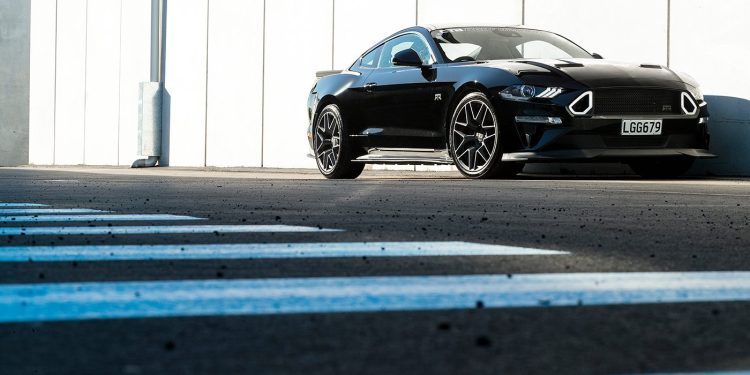2018 Ford Mustang RTR Spec 3 review
Words Kyle Cassidy | Photos Tom Gasnier
While some might think the Mustang GT is pretty good out of the box, others look upon it as just a starting point. With a few bolt ons, it can be turned into this, the 700 horse RTR Spec 3.
The new-for-2018 Mustang received some shrewd updates, making it both a better handling and performing car. And while most will be happy with the GT as it rolls from the factory, for those who like more than a little extra, there’s a new supercharged option available from Ford Performance. This nets over 700hp, and we can now report on just how hard it goes.
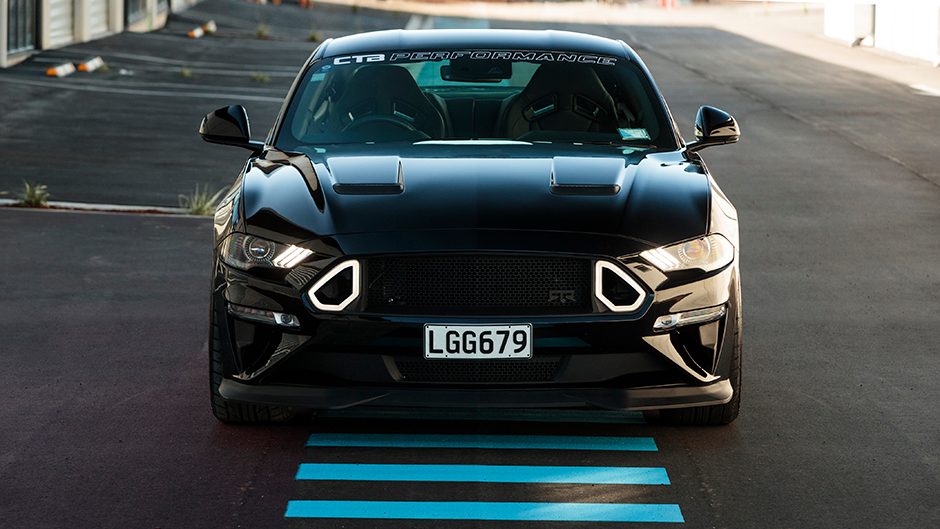
A brief recap first (check the website for last month’s story on the RTR Spec 3 for the full run-down of the set-up). For 2018, the Roush supercharger features new plumbing, including a bigger pump that sucks from the front to improve response. The engine uses the 87mm throttle body from the GT350, and has a new airbox design.
The fuelling system is upgraded, and there’s a water-to-air intercooler. It gets a custom tune too, running on 95 octane, to net around 700hp or 520kW. The upgrade is backed by a three-year/100,000km driveline warranty, covered by Ford Performance and taken care of by CTB Performance. CTB recently dyno’d its new package, recording 406kW (545hp) at the wheels with just over 900Nm torturing the rear treads.
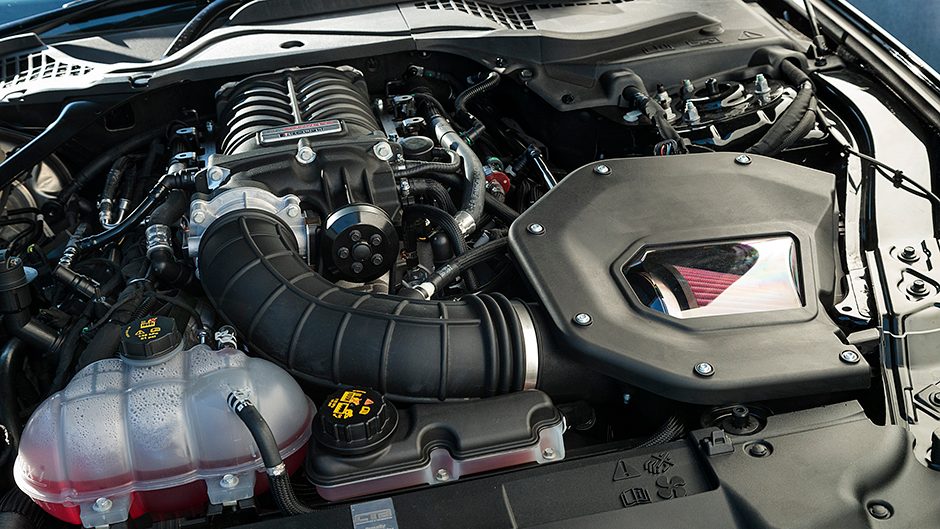
So is it a beast? Yes, and no. It’s hellishly fast but also remains civil, starting and idling smoothly, pootling through traffic calmly and with the bi-modal exhaust, it can even get by stealthily too. This black RTR-kitted tester was equipped with Magneride suspension so it rides okay in the Normal mode, though the larger 20-inch wheels and tyres add a slight edge to proceedings.
Where the stock 5.0-litre needs to get a few revs on the dial before it starts hauling, there’s a solid amount of low-end torque being churned out here and you can feel the intent building earlier. This gets along briskly on just quarter throttle.
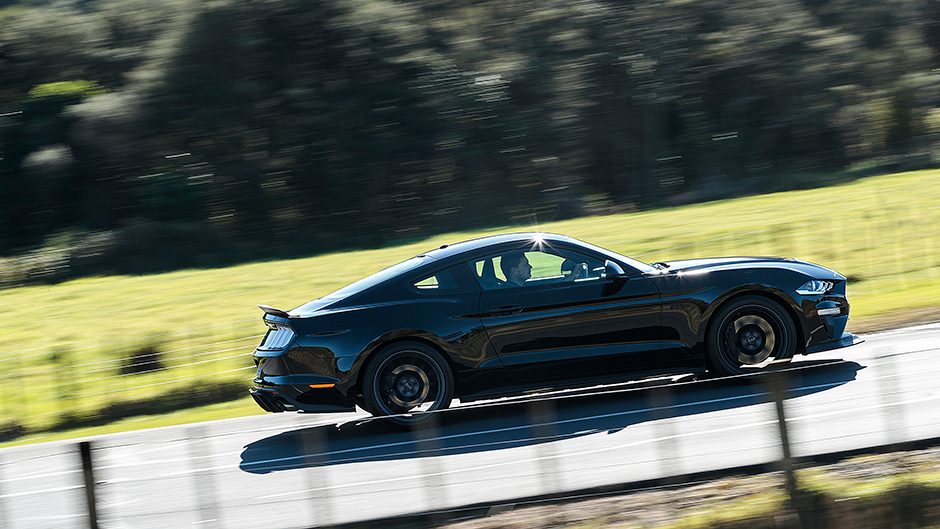
Flatten the pedal and the power flows readily, although we noted a hiccup in the delivery as the tacho swept passed 4000rpm, as if it were struggling for air, but it was just the traction control having minor histrionics. A quick flick of the TC button and the delivery is smoothed. There is no sudden surge, just torrents of torque, power and noise. Just like the regular 5.0, this blown version keeps pulling right up past 7000rpm, but the force is magnified somewhat.
The ten-speed auto helps process the flow rather efficiently, no clunking or slurring between the gears. The Roush tune alters some of the shifting strategies and the auto doesn’t seem as busy as the stock set-up. We did take to manually paddling this along however, as running hot without the help of the TC, you don’t want the gearbox deciding it can handle a lower gear just as you get on the gas out of a bend. Bearing in mind the potential, there’s good traction on the exit helped by the auto offering so many ratios; there’s always the right gear to help balance the power with traction.
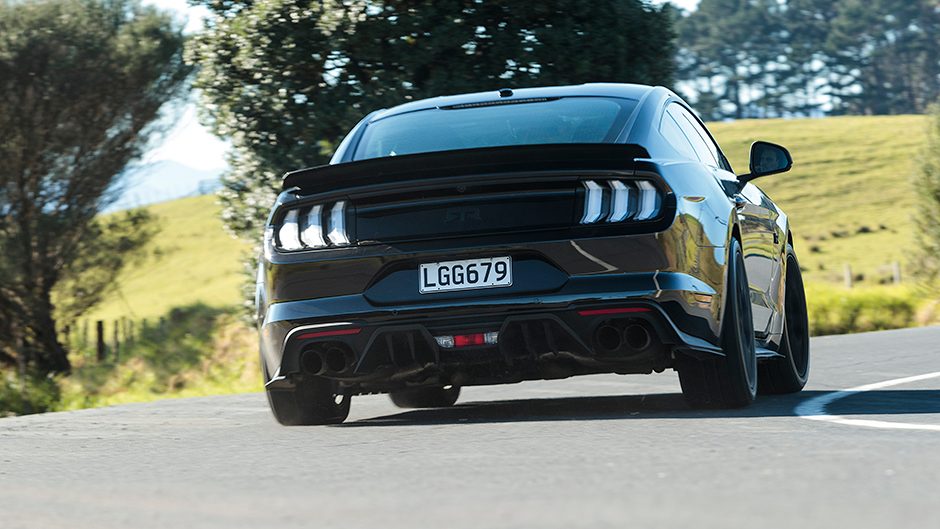
The Mustang set-up can handle the extra herbs too, though there’s a bit more front end push in the tight stuff as the supercharger adds weight while the Nitto rubber doesn’t seem to be quite as grippy as the factory Michelins on road. The whine of the blower is subdued while the pipes roar even louder as the extra air that goes in has to get out as well.
Running it against the timer was interesting. Trying to get the loud pedal down as quickly as possible without breaking traction and keeping it pointing straight proved tricky. After a few attempts, all of them leaving a layer of the Nittos behind, we managed a best of 4.18sec, while the 80-120km/h time clocked in at 2.08sec. The stock GT we managed to coax to a 4.87 and 2.6, so there are improvements there, though the supercharged version is just getting into its stride at this point.
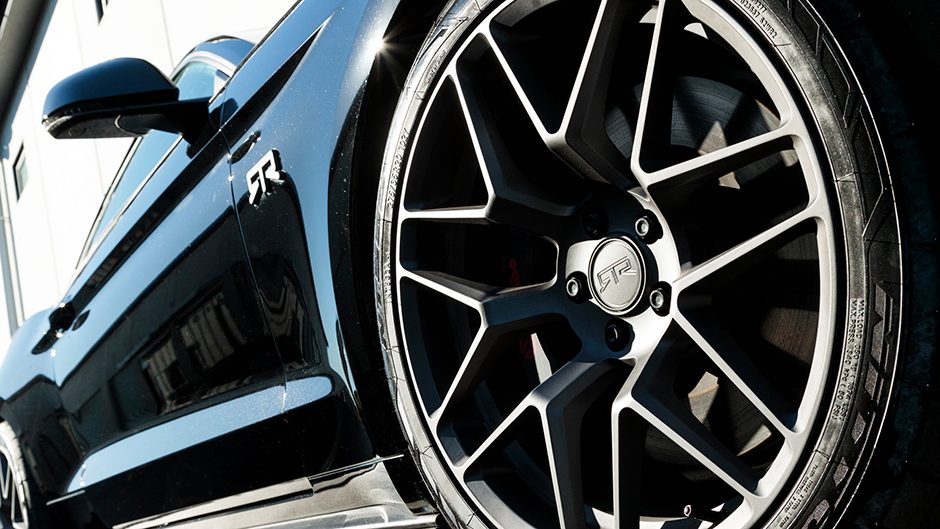
We reckon over a quarter mile the difference would be more marked, provided you got it off the line cleanly. But overall, it’s a sorted package. And hellish thirsty at 29L/100km when under the pump. Gas use can be kept in check using the low end surge; keep the engine below 4000rpm and you’ll still be getting along quite well, but it’s not really what this is about, which is all out excess.
The added visual peril of this GT comes courtesy of a full RTR bodykit. It gains a more grounded look with its prominent front splitter and the wider side skirts and while this car retains its stock ride height, more street cred is just a set of lowering springs away (they tell us the spring for the Magneride dampers is still under development). Both the grille inserts are changed out up front, and along with an RTR rear panel between the taillights, the Mustang identifiers have been removed. The RTR daytime running lamps give the front end added appeal while the 20-inch wheels get 275 cross section rubber all around. The bootlid spoiler and rear diffuser round out the visual updates.
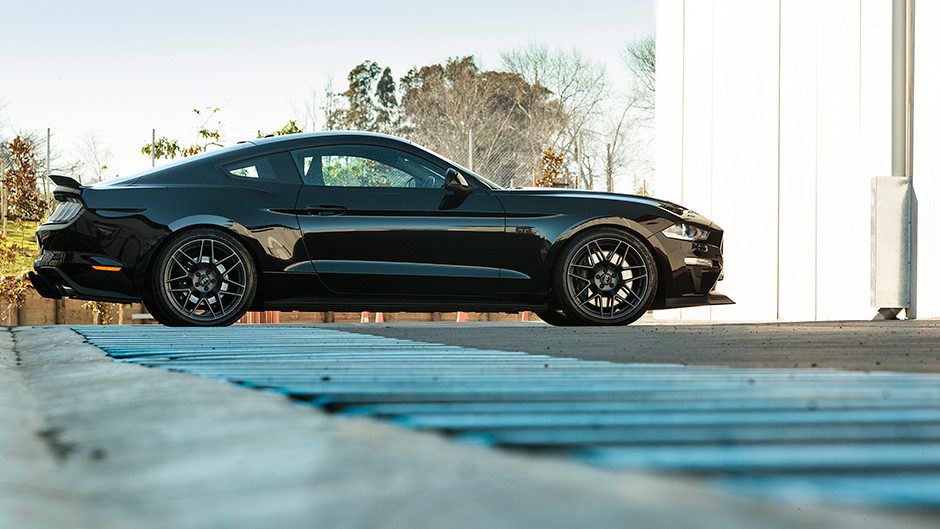
If you like the look, the visual update can be had for $20k, though it also includes a mild 10kW power boost to the V8, while the supercharger kit adds another $20k on top of that which sees the RTR Spec 3 being $119,990 all up, and is able to be ordered at any Ford dealer. That’s quite a bit for a Mustang you might think, but it’s less than what HSV used to charge for its GTS, and probably not too much more than what it’ll ask for its converted Camaro.


